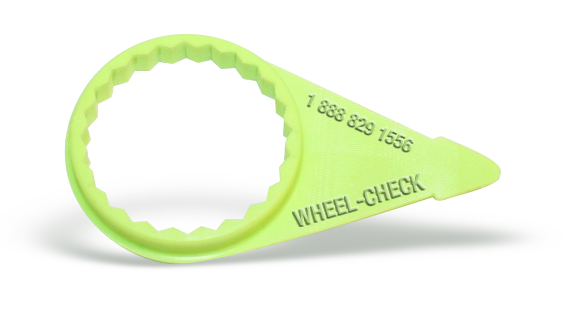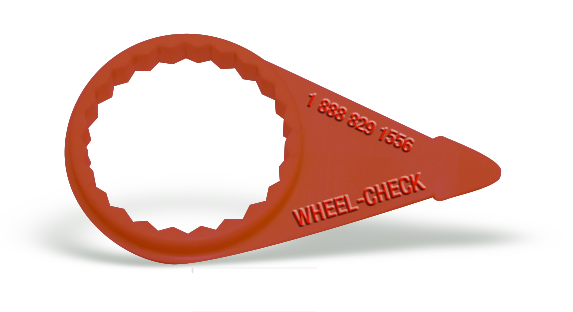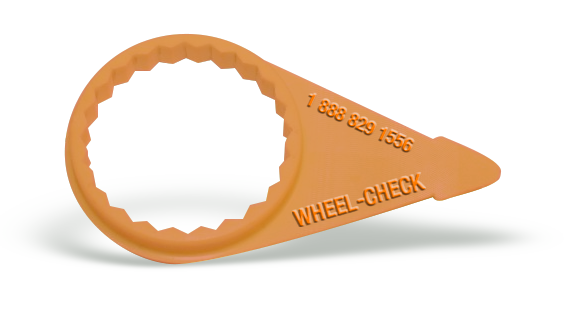

RUNAWAY BUS WHEELS IMPERIL PUBLIC
MTA LOGS 16 INSTANCES IN BALTIMORE SINCE AUGUST; CAUSE STILL UNDER INVESTIGATION; 15 RIDERS AND 5 DRIVERS HAVE CLAIMED INJURIES
Baltimore Sun, Originally published May 26, 2002
By Marcia Myers, Sun Staff
Rear wheels have fallen off Maryland Transit Administration buses at least 16 times since August in a series of accidents that have baffled MTA officials, resulted in injury claims from bus drivers and passengers, and imperiled pedestrians and motorists in the path of the 200- pound wheels.
These types of accidents are so unusual that the National Highway Traffic Safety Administration knows of only one case of a bus losing a wheel anywhere else in the country in the past three years.
But MTA officials waited until after the 10th incident in Baltimore to launch an internal investigation last month. And as the accidents continue, they still aren't sure what is going wrong.
Four weeks ago, a pair of left rear wheels from a bus heading north on Calvert Street rolled off into early-morning traffic across Lombard Street. One wheel hit a curb, bounced up "at least 14 feet," slammed against the wall of a McDonald's, then spun on the pavement, said bus driver Robert B. Allen. The other cruised past the Brookshire Suites Hotel and toppled over near a parking garage.
"It was something like out of a movie," said Allen, an MTA bus driver for 32 years. "The traffic light on Lombard was red, thank God. If it had been green, the tires would have probably killed someone."
Norma Powell, a passenger on one of four buses whose wheels came off last month, remembers smoke billowing into the crowded vehicle and panicked passengers racing to get out. "A great big tire was laying in the middle of Belair Road," she said. "Oh my Lord, I couldn't believe it."
Safety experts say even one incident of a wheel falling off a bus should receive immediate attention.
"This is a problem you would want to address right away," said Peggy Fisher, a Detroit-based consultant for bus and truck fleets. "You're talking about a lot of weight being propelled even at 20 miles per hour. It can cause tremendous destruction."
In Baltimore, buses lost wheels at least once in August and January, three times in February and twice in March. Four more incidents were reported in April, and five so far this month, according to MTA records.
Acting MTA Administrator Virginia White, the agency's top executive, has kept the investigation a discreet internal affair, but it has been marred by infighting and an apparent conflict of interest on her part.
ACCORDING TO INTERVIEWS AND DOCUMENTS OBTAINED BY THE SUN:
WHITE FAILED TO DISCLOSE THE EXTENT OF THE PROBLEM, including the number of incidents and reports of injuries, even to her bosses at the Department of Transportation. They learned the scope of the problem only a few days ago.
WHEEL MANUFACTURERS - typically the first to be called in during such accident investigations - were notified by the MTA about vague wheel problems two weeks ago. As of early last week, they still had not been told the number of incidents or that buses had lost wheels.
WHITE EXCLUDED THEMTA'S SAFETY DEPARTMENT FROM INVESTIGATION TEAM and blocked an independent inspection of buses arranged by the safety department. And when a safety officer reported a potential wheel maintenance problem in the MTA's largest shop, on Bush Street, White challenged the officer's authority.
FRANK WHITE, THE ACTING ADMINISTRATOR'S HUSBAND, runs the shop on Bush Street - an apparent conflict of interest that some say is complicating the investigation.
State Transportation Secretary John D. Porcari, who learned the magnitude of the incidents early last week, has launched an independent audit of all records on the problem and has asked an outside firm to investigate the wheel failures and MTA's response.
"We have to absolutely get to the bottom of this," Porcari said late last week. "No one would want to be in the vicinity of a wheel coming off a bus. ... Something needs to be done immediately."
An official with the National Highway Transportation Safety Administration described such incidents as "very rare."
"If it looks like a pattern - and two incidents can be a pattern - we'd want to investigate," said NHTSA spokesman Tim Hurd.
Maintenance and operations employees, including those in the Bush Street shop, say the wheel problem was evident as early as February. Virginia White said in recent interviews that even one incident is too many and deserves immediate attention. But she said she didn't recognize a pattern of wheel failure until April 20, after three incidents occurred in four days. On that date, she said, she began an investigation. By that time, 10 buses had lost wheels.
"That to me raised the flag that this was not our normal way we operated," she said. Since then, she added, she has conducted a "proactive and very, very comprehensive investigation."
She suggested that a wheel coming off was not necessarily dangerous. A rear wheel would almost always "fall off in place, just tip over on its side," and the bus frame would likely catch it, she said.
"Rolling down the street? God, I hope not," White said.
In an incident on Jan. 18, a rolling bus wheel hit a natural gas tank at Fort Smallwood Road and Lauren Way, causing a major gas leak, according to MTA records. Other wheels that broke loose from buses rolled into vehicles and buildings.
"I do know there have been no injuries. ... There have been no claims," White said during an interview two weeks ago.
But three days after that interview, MTA spokeswoman Suzanne Bond verified 15 passenger claims of leg, neck, back and other injuries. She confirmed 16 incidents of lost wheels and about a dozen instances in which loose wheels were discovered on buses in the garage.
Also, five bus drivers have filed injury claims, according to the Maryland Workers' Compensation Commission records.
"We've been lucky so far," says Deoleous Bridges, the head of the local drivers and mechanics union.
MTA officials have a couple of theories on the cause of the loose wheels.
Employees using powerful air-pressure wrenches may have used too much force when putting on the nuts that secure the wheels, perhaps weakening the bolts or "studs" and causing them to fracture.
But why now? The wrenches have been used for years.
Managers suspect that some mechanics did not get adequate training. Lab tests showed no defects in the broken studs, said Edward M. Connelly, MTA chief of quality assurance.
An incomplete investigation by independent consultants showed that lug nuts on nearly a quarter of the buses they inspected had been put on with double the recommended force.
Workers are now scrambling to replace all 30,000 rear-wheel bolts on MTA's more than 800 buses. They are using new air wrenches that are less powerful and also manual wrenches that limit torque, the amount of force it takes to rotate the nut on the stud. The job should take two more weeks, with priority to buses on high-speed and longer routes in the city and suburbs. Since April 20, the agency has spent more than $250,000 trying to fix the problem.
But the accidents continue.
On May 10, a bus lost its newly installed right rear wheels at North Gay and Lanvale streets. Loose wheels have also been discovered on other buses that had supposedly been fixed, according to John M. Lewis, acting assistant manager of bus operations.
The latest theory: A deteriorating gasket-type piece between the wheels could be causing the bolts to loosen. "We're testing that theory now," Lewis said. "Time will tell."
Meanwhile, employees are unnerved.
One bus driver said she was traveling down a busy city street when the steering wheel jerked to the right.
One of the passengers yelled, "Your wheels are gone," said the driver, who asked not to be identified. "We were sliding down the street. There was a van on the right, and I tried to avoid hitting it."
In a written report on another incident, a driver described losing control of a bus and hitting a guardrail.
"A lot of the drivers are afraid to drive the buses," said Kevin Wise, an attorney representing two drivers in worker compensation claims. "It's only a matter of time before a member of the public who's unfortunate enough to be around one of these buses will be hurt."
Passenger Norma Powell, a 61-year-old housekeeper at the University of Maryland Medical Center, was on her way home from work April 19 when the bus she was on lost its right rear wheels on Belair Road. She said the bus lurched back and smoke began to pour in.
"All these people panicked, and I got scared too," she said. As people pushed to get off the bus, Powell was shoved to the ground. She injured her right knee, and was taken by ambulance to Union Memorial Hospital. She went back to work Wednesday after being out a month.
"This is my only way to and from work," she said. "You'd like to feel a little bit safer than that."
Fisher, the fleet consultant, said that if the cause isn't obvious after one incident, manufacturers are usually brought in. Most times, she said, they can isolate the problem quickly - whether it is in the wheel or the surrounding parts, or is due to a maintenance failure.
"There's a lot of things that can happen to cause this," she said. "One of the things is incorrect torque, but that's just one thing." Often, she said, it is a combination of problems.
Said one operations manager who asked not to be named for fear of losing his job: "It became obvious that we needed some type of outside help because we weren't able to pin this thing down. It's bigger than we are."
'Doesn't happen often'
The two manufacturers of the wheels say the MTA told them two weeks ago there was a problem. As of early last week, the agency still hadn't told them much, they say.
Alcoa Corp. sent a representative when the MTA first called, said David Walters, the company's supervisor of warranty and field service.
"This doesn't happen often at all," Walters said. "I had a call from one of their people who talked about wheels coming off one bus. I've only heard of one."
During the Alcoa representative's visit, MTA officials did not disclose the scope of the problem, according to the company.
Bill Noll, vice president of engineering at Accuride Corp., told a similar story. The company was first told that a loose wheel had been discovered on one bus.
"They said when the driver stopped the bus, he heard a sound and went out and looked.
The wheel had come loose. It didn't roll off of the bus," Noll said.
On learning from The Sun the number of buses that had lost wheels, Noll was startled.
"If they'd said 16 wheels and they'd said transit buses, we wouldn't have waited two weeks - we'd have had someone on a plane that day," he said.
Bridges, president of the Amalgamated Transit Union Local 1300, said he contacted the MTA early last month after several drivers reported incidents.
"They [operations officials] told me these were isolated incidents and they were on top of it," Bridges said. He recently learned of more incidents.
"I think personally this should be an emergency. They should call the manufacturers, have experts come in, but they just kept it hush-hush."
THE INVESTIGATION
White limited her investigation within the agency as well.
The MTA's former director of operations, White named only operations employees to the investigation team last month. It includes her husband and his counterparts at three other MTA maintenance garages.
However, the MTA's safety department, a watchdog branch that investigates bus accidents and assesses maintenance performance, was not included.
Transportation Secretary Porcari said it made no sense to exclude the safety department or the manufacturers. "One of the ways you quickly take corrective action is to make sure you have all the information and that you're sharing it," he said.
White explains the exclusion this way: "If there are serious accidents where there might be blood and guts, safety [department] is there to assist." In this case, she said, "they're there as advisers to us."
Of the operations group, she said: "We have a group of guys who together probably have close to 100 years' experience in maintenance. Collectively, the experience in that room was good enough to solve our problem."
In one interview, White said she told Porcari about "service" problems, but could not recall whether she mentioned that wheels were coming off and was certain that she had not told him the number of incidents.
"I wasn't aware of the numbers," she said.
Porcari said White told him early this month that several buses had lost wheels.
"And we apparently had transported some passengers to the hospital," he said Thursday.
"That I just found out in the last 24 hours."
Other actions taken by White that involve her husband smack of conflict of interest, some employees complain.
Department policy prohibits employees from holding a supervisory role over a spouse. But an exception for the Whites was approved in September 2000 - with provisions. Any decisions facing White, then deputy administrator, that involved her husband would be handled by the MTA administrator, according to the provision.
When White took the helm in July, the policy was not changed.
"If there's even an appearance of impropriety, it's something we have to take very seriously," Porcari said.
According to several sources and MTA records, as White's investigation got under way late last month, a new MTA safety officer, Katherine Davis, visited the Bush Street garage. She discovered that an anti-seize product was being applied to wheel bolts against the manufacturer's recommendations.
Davis reported it to operations officials, who ordered the practice stopped. Frank White responded angrily in an e-mail, one of a series obtained by The Sun.
"I understand that you had to run to John Lewis and Ed Connelly to let them know that I had someone using Never-Seize on the lug nuts," White wrote to Davis. "File your report because I don't care if we do everything wrong. All Safety [department] wants is to be able to control, not respectfully resolve issues and problems."
Safety Director Larry Hewitt defended Davis in a note copied to several staff members. The problems were serious enough to merit attention from more than one department, he wrote.
A few days later, in an e-mail to Hewitt and Lewis, Virginia White had the final word. "Yes, the situation of loose wheels is serious ... and Operations [department] is taking the appropriate measures to identify and correct the situation," she wrote.
Davis' visit to the shop was "a good learning experience," she continued. "It will take many years of incidents for her to become an expert in bus maintenance. She is not qualified to give advice."
White told The Sun she didn't know whether Davis' complaint was valid but said the safety officer nonetheless had overstepped her authority by pointing it out.
"She's not an expert yet," White said.
INDEPENDENT PROBE
Frustrated by the continuing problems, the safety department hired an outside team of consultants two weeks ago to conduct a wheel failure analysis, as it has for other transit accidents. The consultants planned to visit the four maintenance garages and perform a series of tests, including checks of air pressure and torque.
According to several sources, the two-man team had been at the Bush Street garage only a couple of hours when two senior MTA managers showed up and told them to leave. Hewitt, the MTA safety director, was there and refused to stop the inspection unless ordered to do so by Virginia White. A few minutes later, White phoned him and ended the inspection.
Hewitt would not discuss the incident and referred questions to Bond, the MTA spokeswoman.
White said she stopped the inspection because Hewitt had not told anyone about it in advance and because the independent inspections could have been "counterproductive."
"I said QA [quality assurance] is leading the investigation," White said.
However, Transportation Secretary Porcari said safety officers must have authority to "bring in whatever independent expertise they need. Often the issue is so specialized, you need to be able to respond with independent experts."
The consultants' incomplete test was revealing.
A lug nut should be secured with a force between 450 and 500 pounds. Of the 127 lugs tested, 51 percent exceeded 700 pounds, and 24 percent exceeded 1,000 pounds, according to a report obtained by The Sun.
"That is unbelievable," said an industry expert who reviewed the results but asked not to be named. "You rarely see studs installed at that high a torque. That is very close to immediate failure."
Virginia White said she worries that the incidents might taint the agency with an image of less-than-safe transportation. "I don't want people to think it's not safe to ride the MTA," she said. "It is safe."
These concerns in no way colored the inquiry, she added.
Asked if he was satisfied with White's handling of the problem, Porcari said he wanted to wait until his investigation is done before drawing conclusions.
"But I will tell you, one incident is too many and it's very easy to lose the trust of our traveling public. ... These are very troubling incidents."
Copyright © 2002, The Baltimore Sun

WHEEL-CHECK®: High visibility loose wheel-nut indicator

WHEEL-TORQUE: Red torque indicator used to mark a nut has backed off, and maintenance is aware of the problem

WHEEL-CHECK®, HIGH TEMPERATURE: Loose wheel-nut indicator that withstands higher temperatures

WHEEL-CHECK®, CUSTOM COLORS: Custom colors and sizes are available upon special request.
© All Rights Reserved. WHEEL-CHECK®, THE LOOSE WHEEL-NUT INDICATOR. "Over 25 years helping roads to be safer."
*The use of Wheel-Check® in no way guarantees wheel-offs will NOT occur.